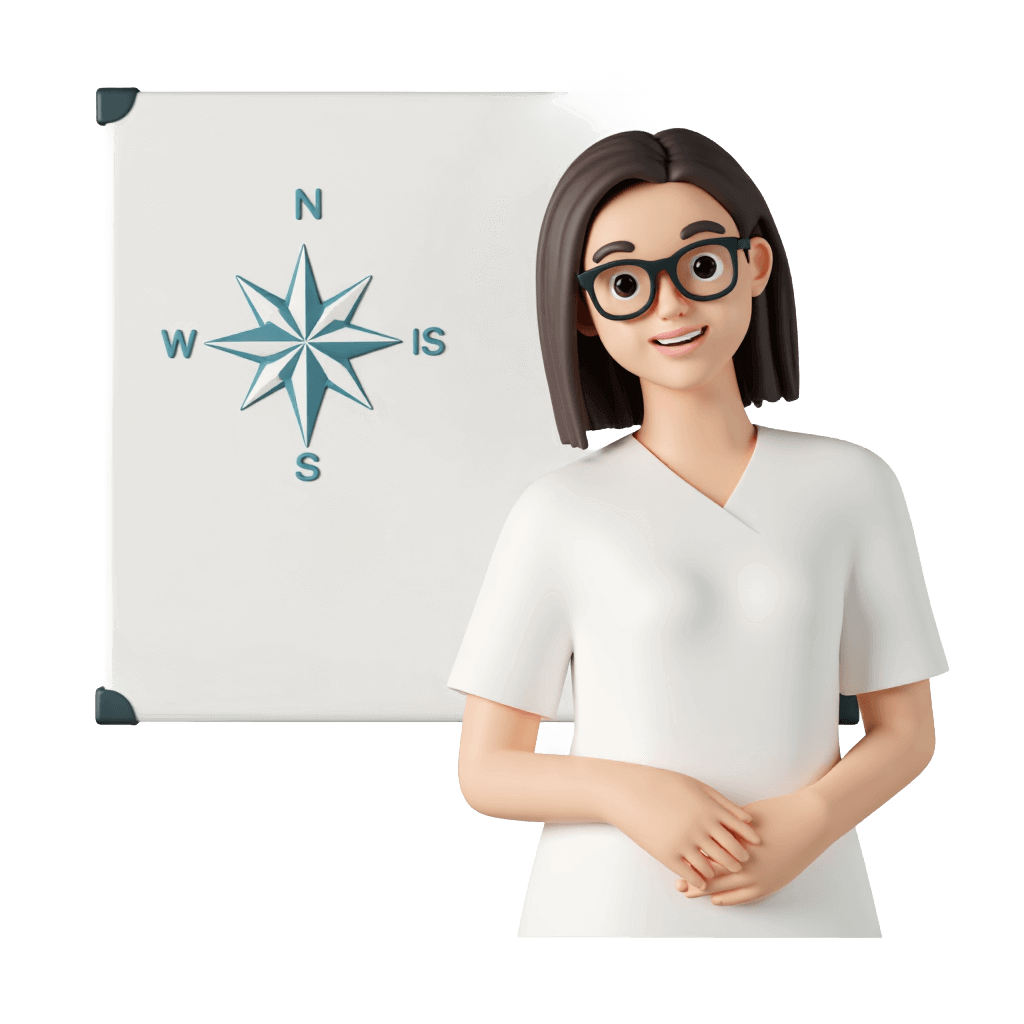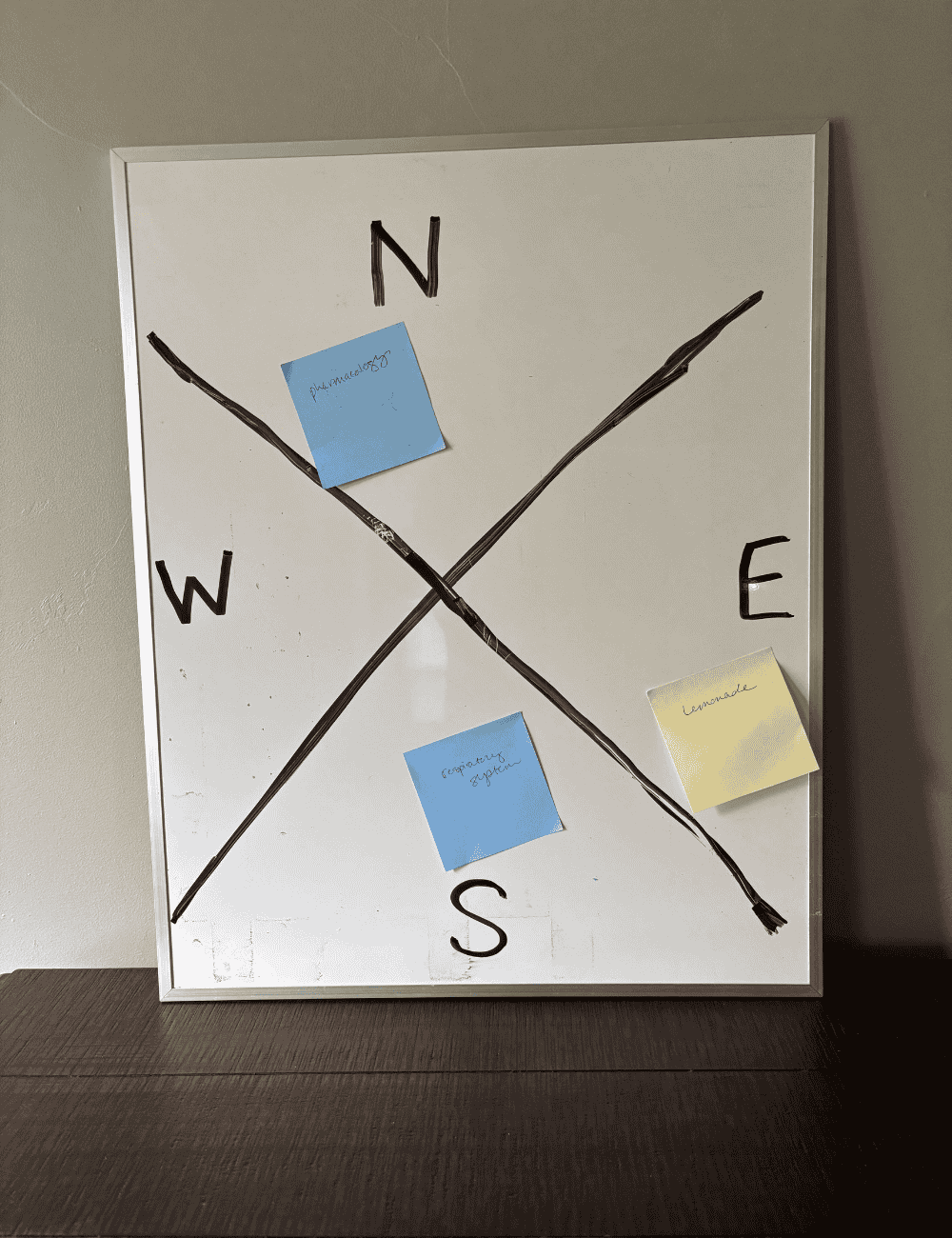The Compass Points Activity for Nursing Exam Review
As a nursing instructor, the time before an exam is critical. Especially that first exam. It sets the tone for the rest of the semester, and helping students feel prepared, energized, and hopeful is something we aim to achieve. The challenge? Many review activities don't quite fit our learning objectives, can feel repetitive (hello case studies), or overly complicated to create, like a Jeopardy! board.
The Compass Points Activity is a simple, practical, low-tech exam review to help students review, organize the course material, and identify key priorities before an exam. This activity encourages participation from everyone without needing any tech or hours of prep.
✅ Why the Compass Points Activity Works
The Compass Points Activity is effective because it:
Breaks the "quiet room" — Even introverted students have a clear, low-pressure way to contribute.
Keeps engagement up — With physical movement, tactile objects, and peer interaction, students can't help but be engaged.
🧭 How to Set Up the Compass Points Activity
This is a low-tech active learning strategy.
First, you will need to draw the compass shape and label the directions (N, S, E, W).
This drawing could be done on any large surface. A whiteboard would work best. But you could also use chart paper or just a blank wall and use painter's tape to draw the lines.
Next, identify what each direction "means". You can do this verbally or via a slide.
North (Need to Know) – Essential information or concepts they must understand for the exam.
South (Suggestions) – Advice for classmates on how to study or approach tricky topics.
East (Excited) – What they feel confident about or look forward to demonstrating on the exam.
West (Worrisome) – Areas of uncertainty, topics they find challenging, or potential stumbling blocks.
Next, give each student or small group of students a stack of sticky notes and ask them to write one response for each direction.
As they finish, they can go up to the board and place their sticky notes in the correct quadrant of the compass.
✅ Conducting a Debriefing Session
Once all students have placed their sticky notes on the board, you can begin to debrief the activity. Review each section, grouping similar ideas and looking for patterns.
Address "Worrisome" topics directly by offering study tips or discussing student fears.
Prioritize and clarify "Need to Know" points.
Encourage students to use the "Excited" quadrant to explain how they will use exam information in practice.
Use "Suggestions" as peer-to-peer advice around study strategies, useful YouTube videos, or helpful notes that can benefit the entire class.
🔄 Remix: Using Compass Points for Clinical Orientation
This same format can also help during clinical orientation:
North (Need to Know) – Essential unit policies, high-priority patient safety steps.
South (Suggestions) – Tips for teamwork, charting shortcuts, or communication strategies.
East (Excited) – Skills they're eager to practice on the unit.
West (Worrisome) – Concerns about patient assignments, unfamiliar equipment, or clinical expectations.
This variation not only breaks the ice but also helps you quickly identify where students may need extra guidance before their first shift.
📌 Tips for Success
Use bright colored sticky notes to add visual interest
Allow time for quick peer discussion during the debrief to reinforce learning through social interaction.
Take a photo of the finished compass to share later for review.
By adding the Compass Points method to your toolbox of active learning activities, you give students a creative, low-tech way to share what they know, voice their concerns, and learn from each other.
Looking for ready-to-go active learning activities for your classroom?
Resources
Gilmore, B. & Goldberg, G. (2023) Active Learning: 40 Teaching Methods to Engage Students in Every Class and Every Subject.


